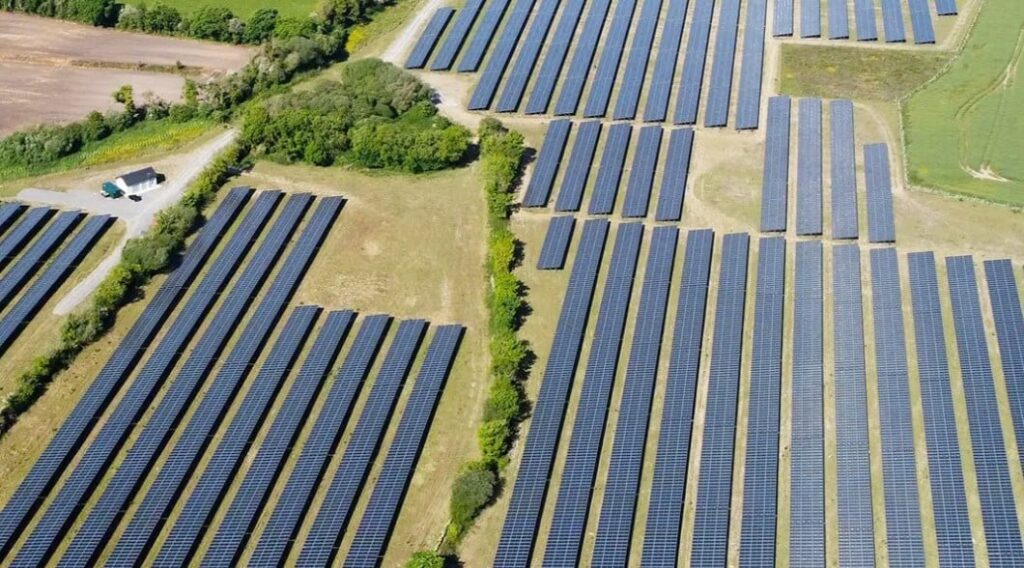OFGEM, the energy regulator, has officially approved plans to get ‘Zombie’ projects from the Grid connection row and to streamline the connection of renewable energy projects that are most needed, which could lead to a significant increase in PV proposals on solar energy on utility scale.
The long -awaited schedule connection reforms were the first Proposed by the National Energy System Operator (NESO) With the aim of reducing the number of projects awaiting the connection with the British electricity grid.
According to the Department for Energy Security and Net Zero (Desnz), companies are currently waiting up to 15 years to be connected, with the duration of the queue that has been growing ten times in the last five years.
Orgem said that from February 2025 756 GW of projects were in the queue, with 587 GW at Transmission and 178GW on the distribution network. These figures exceed a lot that is needed for clean power 2030 (CP30) or net zero by 2050.
As such, the supervisor has made his good Minded-to-decision to approve the reforms. The Details about how the new process will work are usually unchanged from earlier this year.
Raster connections reform an important blessing to Zonne -PV and Bess
The move is expected to be an important blessing for the Solar PV sector in the UK. According to a spokesperson for the energy regulator, orgem expects a significant increase in gate 2 offers, from 39 GW to 65 GW. Trade Association Solar Energy UK is also of the opinion that the reform of the grid Connection Doop will probably spear the spear package on Utility-Scaly-PV developments.
“The reform of the connection of the connections is crucial to achieve a clean electricity by 2030 and to clear the road for the 60 GW industry to deliver. Although we in principle welcome the announcement of Ofem, the government must ensure that network operators do not impose any arbitration of the Solar,” CEIGERIGIE and Battery storage, “Cingonnergie and Batterie Uk, said.
“Limiting viable projects would undermine the pipeline needed to reach the government’s energy mission and to contradict his call to” choose Great Britain “for investments.”
However, it is not only solar PV that benefits from the reforms of the grid connection. The reforms will indeed see a remarkable rise in the capacity of Battery Energy Storage System (BESS), an important technology in supplementing and strengthening variable renewable energy generation and maintaining gridness.
Research by the UK Independent Power Producer (IPP) Root-Power has shown that 7.6 GW of projects, in 174 projects, will probably be offered to connect before 2030. The goal of the CP30 plan is to have 11GW BES Operational by 2030.
Neil Brooks, managing director of Root-Power, said: “The CP2030 reforms will create great opportunities for the storage sector. However, as soon as revised connection offers are issued, now they will probably come up with strict commitment to commitment to deliver those limited means.
Brooks also noted that the market is on its way to consolidation, in which developers have to sell their project developments quickly to IPPs they can finance and build.
The changes will also grant potential investors further certainty about the award of financing for the energy transition of the country. This could benefit the country by helping to scale up other clean technologies, such as electric vehicles (EVs), heat pumps and data centers.
Mikey Clark, CEO of Relode Energy, a developer of Gigawatt scale Power Parks, said that energy is the “backbone of the economy”.
“Energy is the backbone of our economy, and with entire industries that are being asked to electrify and decipher, it is vital that real, fit-for-purpose demand connections are prioritized in the queue,” Clark said.
“Timely connections will give companies the certainty and confidence that they need to invest, grow and compete on a worldwide stage, which involves economic growth and net zero can be achieved.”
What has changed in the schedule connection process?
The only GEM adjustments have a slightly smaller port 1 queue and the most important changes are powered by the newly combined transmission and distribution level solar capacities in CP30.
There will be no connection break after preparation controls have been done, and projects with planning state (already protected under the reforms) that are due to connection on or before 31 December 2027 will receive certainty about connecting data and connection points.
Orgem said that the reform of the connections will yield wider benefits, including reducing the consumers’ accounts by cheaper generation and lower system costs, both by avoided Networkbuild and an expected reduction in restriction costs.
It said that the Netwerkbuild that is needed to accommodate the entire queue would be unfeasible and would entail significantly wasted costs. Neso, Desnz and OFEM have each explained these benefits independently.
Desnz said that following a strategic, planned approach will remove the need for billions of pounds that are spent on unnecessary scheduling reinforcement. Energy secretary Ed Miliband added that the changes “Zombie” projects and rapid connections will learn for our own soil strength “.
Share this article First appeared on our Sister site current ±. Additional reporting by George Heynnes.

